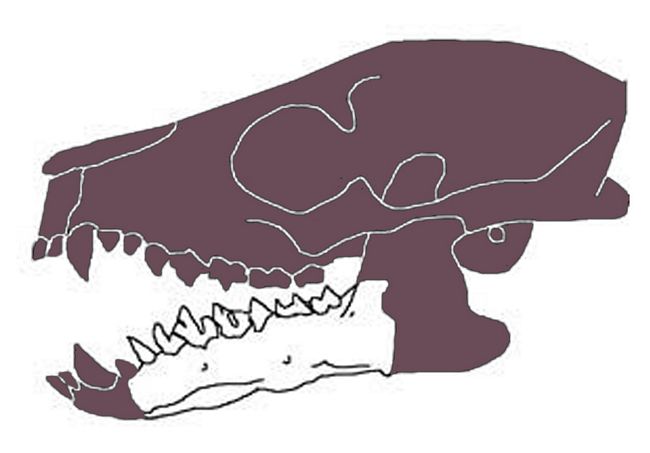Athena Review Image Archive ™
Purgatorius unio skull and jaw

Skull and jaw of Purgatorius unio (after Clemens 2004)
Purgatorius was a small, chipmunk-sized placental mammal found in eastern Montana in deposits dating 66-63 mya. Purgatorius, known only from teeth, jaw fragments, and a few ankle fragments, is widely believed to be the earliest example of a primate or a proto-primate, and a precursor to the Plesiadapiformes.
The first fossils of P. unio were reported in 1965 at Purgatory Hill in the Early Paleocene (Puercan) Tullock Formation, and at Harbicht Hill in the late Cretaceous and lower Paleocene Hell Creek Formation. Other early Paleocene examples have been found in the Ravenscrag Formation and the Bug Creek fauna.
Purgatorius is
interpreted to have been a diurnal insectivore who lived in burrows. The
relationship with Plesidiadapiformes in the Paleocene period is based
on similarities in dentition.
References:
Clemens, William 1974. Purgatorius, an Early Paromomyid Primate. Science. 184 (4139): 903–05.
Clemens, William (2004). Purgatorius (Plesiadapiformes, Primates?, Mammalia), A Paleocene Immigrant into Northeastern Montana: Stratigraphic Occurrences and Incisor Proportions. Bulletin of Carnegie Museum of Natural History. 36: 3–13.
Van Valen, L.; Sloan, R. (1965). The earliest primates. Science. 150 (3697): 743–745.
Copyright © 1996-2020 Rust Family Foundation (All Rights Reserved).